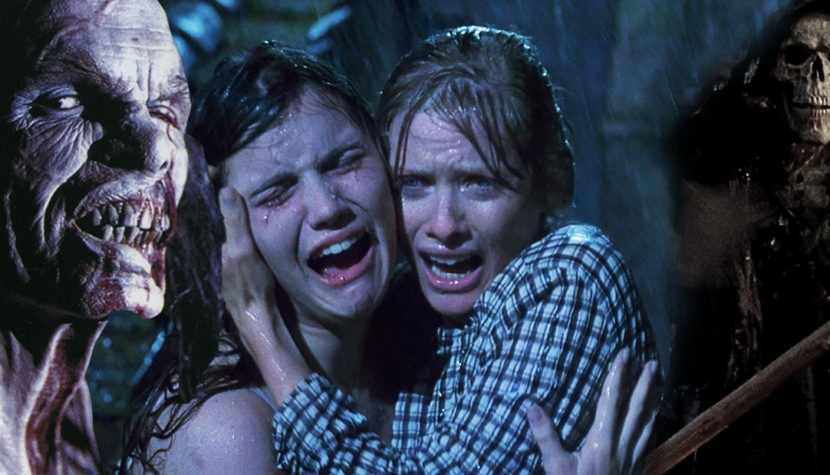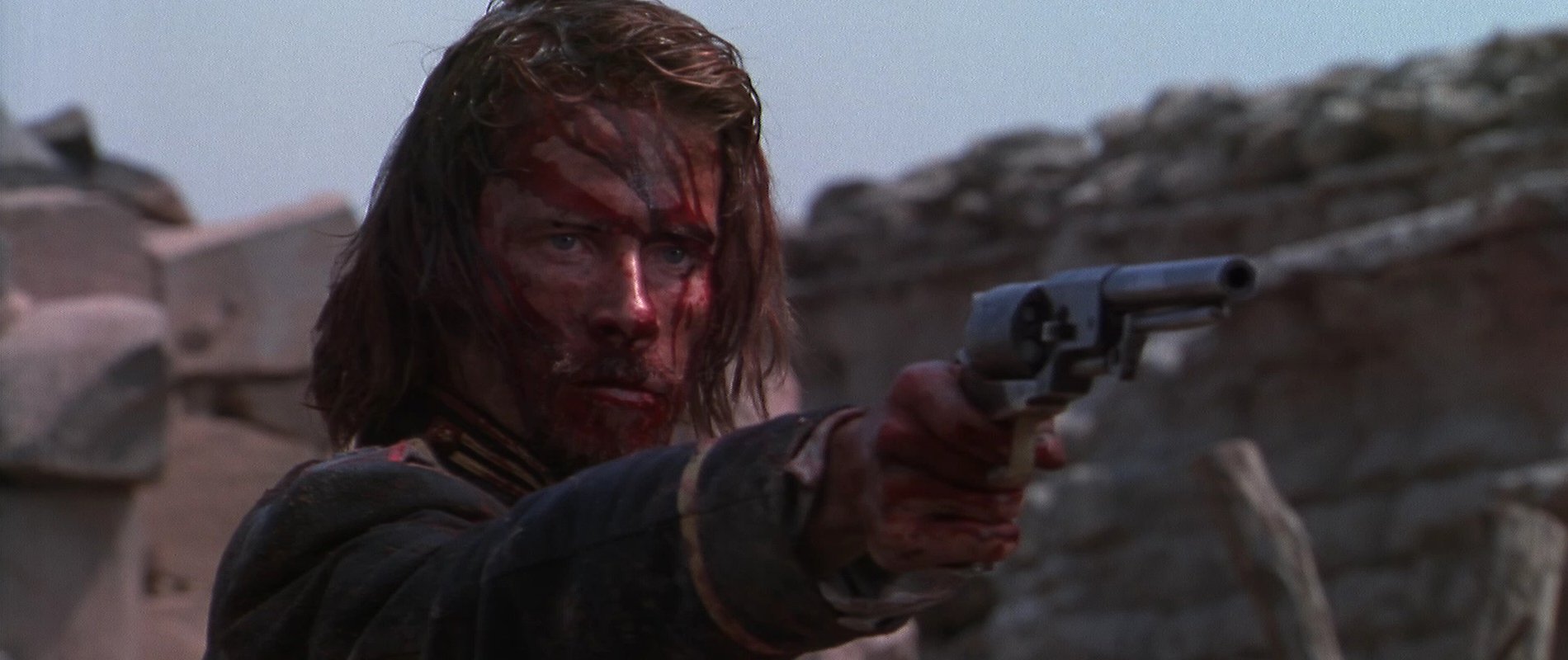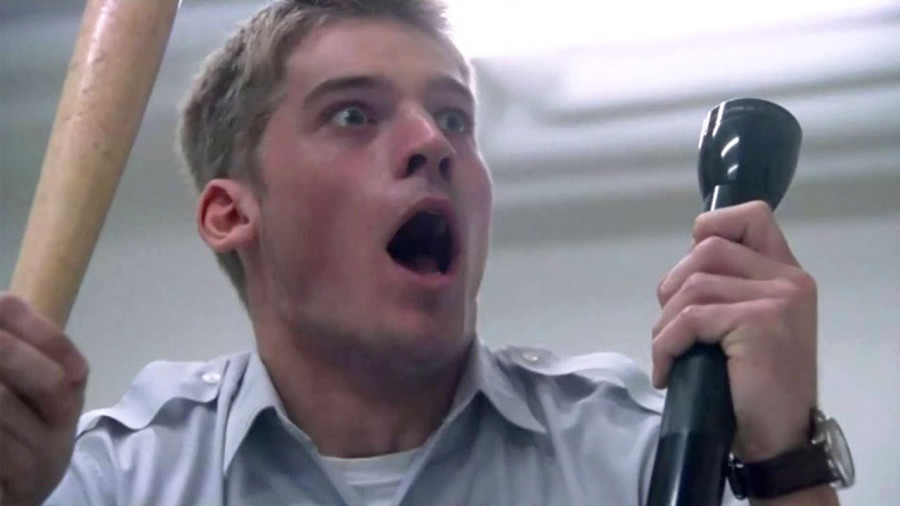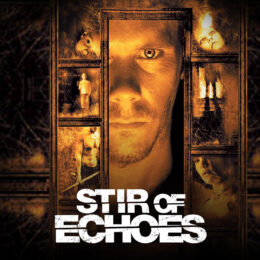5 HORROR MOVIES from the 90’s you DON’T KNOW but you should

The 1990s were not kind to horror, which had to redefine itself after the previous slasher decade. Instead of moving forward, it somehow went backwards – there was more drawing on the classics, led by the grandiose screen adaptations of Dracula, Frankenstein or Interview with the Vampire, than brave attempts to create something new (although the love affair with postmodernism paid off for Wes Craven, director of The New Nightmare and Scream ). The masters of the genre were slowly leaving, but there were no new faces on the horizon. This changed at the end of the decade, although revelations such as The Ring, Blair Witch Project or The Sixth Sense were more of a harbinger of what was yet to come.
I suspect every horror lover has seen the five films below, but I still consider them little known to a wider audience, underappreciated or forgotten. Let them be examples of diversity in a genre that was in crisis at the time, although it did not stop looking for ways to scare viewers.
Body Parts, 1991, dir. Eric Red

Movies like Body Parts are only at their best when their makers focus on their crazy starting point and never for a moment fail to make it believable. In this case, it’s about a hand transplant, which seems to have the memory of its previous owner. It is an idea inspired by the famous Orlak’s Hands, additionally supported by a novel by the French duo Boileau-Narcejac, known to the cinema as the authors of books and screenplays for The Wraith, Vertigo and Eyes Without a Face. Eric Red’s film is difficult to put in a row next to such well-deserved titles, although it beats them with shameless entertainment.
Jeff Fahey stars as a psychiatrist who loses his arm in a car accident. Thanks to experimental treatment, the doctors manage to sew a new limb, but shortly after leaving the hospital, the main character begins to have strange dreams, and the hand seems to have a life of its own. He soon discovers that it belonged to a serial killer whose members have already been distributed. Fahey fulfills himself as an increasingly neurotic owner of a bad hand, although he is best when tied to a hospital bed and can only operate with his incredibly blue eyes.
Red became famous as the screenwriter of The Hitchhiker and Near Dark, so the horror atmosphere was not alien to him while shooting the second film (the first was the sensational Cohen and Tate road movie). At the same time, it is a work whose numerous twists and turns strike at the initial fears related to the foreign body, turning the horror into a macabre and absurd spectacle. There are scenes and images that fit more in line with William Castle’s B-grade horror movies or Mario Bava’s feats, medically impossible, downright ridiculous, but the way the filmmakers treat the material didn’t make me feel for a moment that the film veered into parody. Which is not to say that there won’t be viewers who turn off Body Parts long before its grotesque finale. I had a great time.
Related:
Ravenous, 1999, dir. Antonia Bird

Antonia Bird’s film still remains somewhere on the outskirts of viewers’ awareness, perhaps due to its genre diversity. Here we have a horror about cannibalism dressed in the robes of western cinema, drenched in a thick sauce of black humor and not avoiding a satirical jam. The juxtaposition of two quotes appearing at the beginning of the film (on the one hand, Nietzsche with his staring into the abyss and vice versa, on the other, “Eat me” by Anonymous) quite accurately reflects the nature of Ravenous, a film that tells about dark topics in a way that is not devoid of comedy.
Colonel Boyd, played by Guy Pearce, is delegated for his cowardice (covered by an unexpected and self-made reflection of the fort) to an outpost located in the Sierra Nevada mountains. Shortly after arriving, he and the other soldiers rescue a man who tells them an impossible story about a failed mountain trail and a treacherous guide with a taste for human flesh. A rescue mission sets out to help those stuck with the monster – but the soldiers soon find out that not everything the terrified man told them is true.
There’s a lot to like about Ravenous, from the director’s excellent feeling of material, the great performances of Pearce, Robert Carlyle and the rest of the cast, to one of the most original horror soundtracks by Michael Nyman and Damon Albarn. The theme of cannibalism is treated here without exaggeration, as a taboo that is the last barrier against dehumanization, both physical and (above all) moral. The main character’s efforts to preserve his human nature until the very end are the main axis of the film, which was not the easiest to make (Antonia Bird replaced Milcho Manchevski as director three weeks after the shooting started), and the studio did not know how to advertise. Something that could be easily called a freak was created, but it would be unfair to the Ravenous, who flawlessly walk between deadly seriousness, a joke and a gloomy parable about the disastrous effects of human attachment to eating meat.
Nightwatch (Nattevagten), 1994, dir. Ole Bornedal

As in the case of Next of Kin, which I wrote about on the occasion of lesser-known horror films from the 80s, I also wrote a text about the Nightwatch. And although Ole Bornedal’s film has an American remake, shot by the director of the original himself, the memory of both versions has somewhat faded, which is especially sad in the case of the original, because we are dealing with one of the best European thrillers of the 1990s.
The protagonist of the Danish film, Martin, is a student (played by the future Jaime Lannister from Game of Thrones, Nikolaj Coster-Waldau) who works in a morgue for the night shift. He thinks it will be a great place to learn. However, this will not be given to him – the specificity of the place begins to affect his psyche, and the appearing corpses of the victims of a serial killer raging in the city suggest the inevitability of his appearance in the life of the main character.
More of a thriller than a horror film, Bornedal creates a uniquely spooky atmosphere thanks to its setting in a morgue, where little things like a photo of an anonymous man from 100 years ago, a red lamp, and even the need for regular rounds turn Martin into a walking bundle of nerves. All this builds horror and distracts from the actual danger that lurks elsewhere. At the same time, it is a place that not only has an obvious connection with death, but also begins to reflect the moral deadness of its characters. The hero of Coster-Waldau and his best friend lead the game against challenges that basically hit culture, religion and customs. Of course, with a murderer who is also a necrophiliac who enjoys taking his victims’ scalps off, their behavior can only be taken as a joke, but Bornedal points out that this is playing with fire and one day they may go too far. Thanks to this criticism, Nightwatch is a film in which not only life but also the soul seems to be in danger.
Cementery Man (Dellamorte Dellamore), 1994, dir. Michele Soavi

The best Italian horror of the 1990s is still a relatively unknown item, although I suspect that every lover of horror movies has seen Cementery Man at least once. The director Michele Soavi, a former assistant of Dario Argento, already had the successful slasher Deliria and the gothic Church to his credit, but it was only with the adaptation of Tizian Sclavi’s book that he could give free rein to his specific imagination.
The story of a cemetery caretaker who makes sure that the living dead who rise from their graves quickly get back there is a bizarre (but most surprisingly, working!) combination of horror, romance, black and absurd comedy with existential drama. Brilliantly played by Rupert Everett, the title character, Francesco Dellamorte, is a tormented soul, repeatedly bumping into the reincarnation of his lost love (or rather, different women played by the same actress, Anna Falchi). Tired of the cemetery mission, finding the only support in his mentally retarded assistant, he begins to rebel against the world.
This phantasmagoric story has an episodic structure (which also translates into a slightly chaotic narrative), and each plot ends with the defeat of the main character. Love and death go hand in hand here, not allowing poor Dellamorte any escape from them, while each attempt to find happiness brings completely the opposite result. He finds fulfillment only in the cemetery as a guardian of the border between the living and the dead. Poetic in its message, Soavi’s film does not avoid gore and sex, and the metaphysical finale can be read in many ways. Employing Everett for the main role makes Cementery Man appear the closest thing to a real film adaptation of the Dylan Dog comic book – it was the British actor who served as the model for the character of the “detective of darkness”, which is also the creation of Tizian Sclavi.
Castle Freak, 1995, dir. Stuart Gordon

Stuart Gordon’s another meeting with H.P. Lovecraft, but those who expect a crazy ride in the spirit of Re-Animator and From Beyond will be greatly surprised. Released directly to video, Castle Freak is a grim horror, far from fantastic frivolity in favor of more serious horror. Even Jeffrey Combs and Barbara Crampton, known for their roles in those films, abandon camp, forced to find themselves in a more dramatic repertoire.
An American family moves to Italy, where the castle they inherited stands. This one hides a secret – the title monster, a deformed descendant of the former owners of the estate, is imprisoned in the underground. After he breaks free, he begins to stalk the blind daughter of the current tenants. Soon there is a series of murders for which the girl’s father is blamed.
The film was made after Gordon saw an artwork in producer Charles Band’s office showing a figure of a monster chained to the walls of a castle being whipped by a woman. Inspired by this picture, the director agreed to the terms of studio owner Full Moon Features, which gave Gordon a half-million-dollar budget and full creative control. I suspect that Band – known for producing B-grade horror movies about dolls (including the entire Puppet Master series) – had a completely different movie in mind, closer to Gordon’s earlier achievements.
Meanwhile, Castle Freak strikes with seriousness and severity, and the story is largely about a man struggling with his demons (alcoholism, the death of a child) and unable to communicate with his wife, whose weaknesses begin to take over him. The monster becomes a mirror image of his dark side (not least because of the familial connotations), a sin long hidden, now revealed, which threatens to break up and even kill his family. The script was based on the short story The Outcasts, which in Gordon’s case could refer to both a monster and an American family in a foreign country. This gives the film, shot in Italy, an all-encompassing atmosphere of menace, which the director will infuse even more in his next adaptation of Lovecraft – Dagon.





